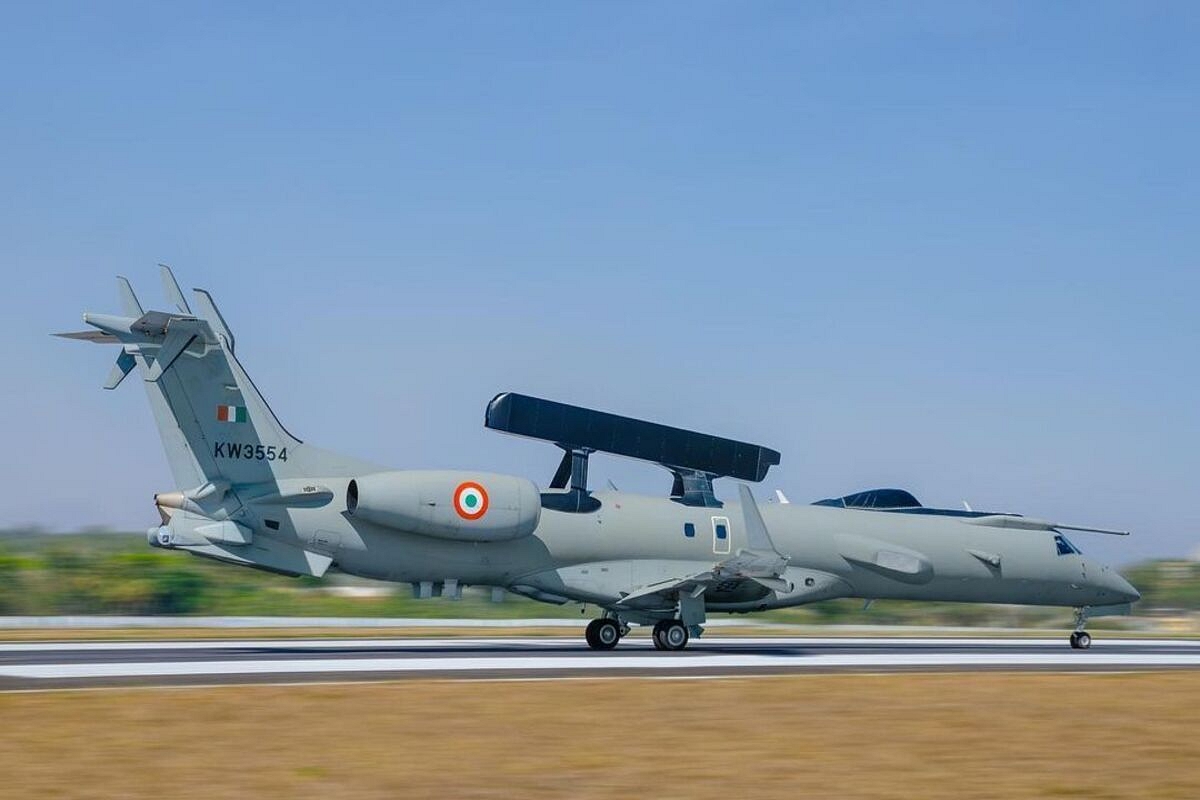Defence
IAF's 'Eye In The Sky' Fleet Set To Grow: Six Additional Netra Mk-1 AWACS Under Consideration

Indian Air Force Netra Mk-1 AWACS system. (Praneeth Franklin)
Indian Air Force (IAF), in an attempt to increase its force multiplier assets, is looking to buy six more DRDO-developed 'Netra' Mk-1 Airborne Early Warning and Control System (AWACS) aircraft.
These are in addition to the in-development next-generation Airbus A-321 based Netra Mk-2 AWACS systems, which were cleared by PM Modi-led Cabinet Committe on Security (CCS) in September 2021.
Currently, the Indian Air Force operates five AWACS systems, comprising three Israeli Phalcon AWACS systems mounted on Russian IL-76MD aircraft and two indigenous Netra Mk-1 systems integrated onto Brazilian Embraer ERJ-145 business jets.
Another Netra Mk-1 is operated by DRDO for research and development (R&D) purposes, and according to reports this AWACS will also be transferred to IAF.
According to the report by Economic Times, the IAF plans to procure ERJ-145 airframes from the second-hand market since the Brazilian manufacturer, Embraer, has ceased production of these jets.
The acquisition of these six aircraft is estimated to cost approximately $1 billion, greatly enhancing the IAF's ability to monitor air activities along its borders.
The Netra Mk-1 AWACS played a pivotal role in the Balakot operations, providing critical air situational awareness to IAF fighter pilots during the mission.
What Is 'Eye In The Sky' AWACS?
Airborne Warning and Control Systems (AWACS), commonly known as "eye in the sky," are aircraft equipped with large radar dishes mounted on their airframes.
These aircraft, equipped with high-powered radar systems, have the capability to monitor enemy air activities, providing comprehensive situational awareness to IAF pilots.
Unlike ground-mounted radar systems, which are limited by the Earth's curvature and have restricted fields of view, AWACS aircraft operate at high altitudes and can effectively monitor a broader area without such constraints.
This enables AWACS to serve as invaluable assets for surveillance, early warning, and control in military operations, making them more capable than their ground-based counterparts.
Support Swarajya's 50 Ground Reports Project & Sponsor A Story
Every general election Swarajya does a 50 ground reports project.
Aimed only at serious readers and those who appreciate the nuances of political undercurrents, the project provides a sense of India's electoral landscape. As you know, these reports are produced after considerable investment of travel, time and effort on the ground.
This time too we've kicked off the project in style and have covered over 30 constituencies already. If you're someone who appreciates such work and have enjoyed our coverage please consider sponsoring a ground report for just Rs 2999 to Rs 19,999 - it goes a long way in helping us produce more quality reportage.
You can also back this project by becoming a subscriber for as little as Rs 999 - so do click on this links and choose a plan that suits you and back us.
Click below to contribute.
Latest